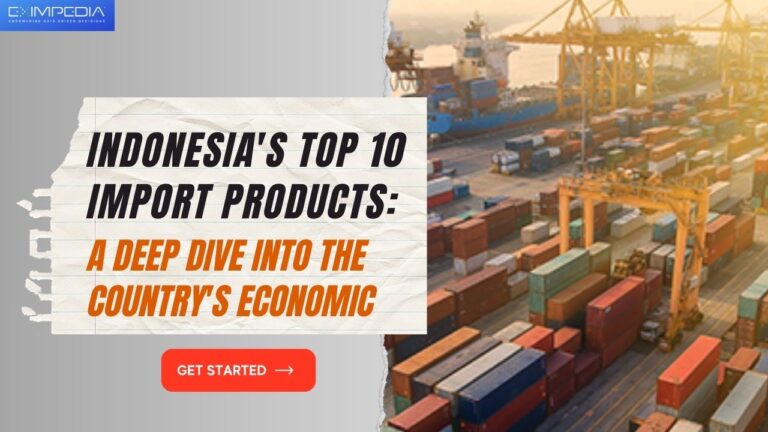Indonesia, situated between Asia and Australia, stands as the largest economy in Southeast Asia and hosts the world’s largest Muslim population. This archipelago of thousands of islands boasts ethnic diversity, with over 300 regional languages spoken. From affluent urbanites to rural hunter-gatherers, Indonesia presents a unique blend of lifestyles. Once home to sophisticated kingdoms before Dutch colonization, the country declared independence in 1949. Despite being a burgeoning global economy, Indonesia grapples with demands for autonomy in some regions.
Indonesia’s Import Boom: A Closer Look
In recent years, Indonesia has witnessed a substantial surge in imports, evident in the 2023 import data. The country imported goods worth a staggering US$237.4 billion, marking a remarkable 25.8% increase from 2018. Delving deeper into the statistics, the Indonesia trade data reveals a 21.3% year-over-year increase from $195.7 billion in 2021. However, a depreciating Indonesian rupiah against the US dollar has impacted costs, making imports more expensive.
Key Players in Indonesia’s Import Landscape
Exploring the leading suppliers, mainland China dominates with 28.5% of Indonesia’s total imports, followed by Singapore (8.2%), Japan (7.2%), and Malaysia (5.3%). Asian nations contribute a substantial 74.8% to Indonesia’s imports, with European and North American countries also playing significant roles.
Indonesia’s Import Evolution: A Historical Perspective
As Indonesia’s middle class expanded between 2004 and 2012, imports tripled. However, since mid-2013, factors such as low commodity prices and weak domestic demand led to a decline in imports. Key categories include oil and mineral fuels, computer and electronic equipment, electrical machinery, steel and iron, plastic materials, and transportation.
Unveiling the Top 10 Imports of Indonesia in 2023
- Oil and Other Mineral Fuels: US$44.9 billion (18.9%)
- Computer and Electronic Equipment: $31.6 billion (13.3%)
- Electrical Equipment and Machinery: $26.4 billion (11.1%)
- Steel and Iron: $13.9 billion (5.9%)
- Materials Made of Plastic: $11.1 billion (4.7%)
- Transportation: $9.5 billion (4%)
- Organic Chemicals: $7.7 billion (3.2%)
- Waste from the Food Industry and Animal Feed: $4.6 billion (1.9%)
- Cereal Sales: $4.5 billion (1.9%)
- Iron or Steel Products: $4 billion (1.7%)
Indonesia’s Top Import Partners
China leads the pack as Indonesia’s top import partner, followed by Singapore, Japan, the US, and Malaysia. Understanding these key players is essential for businesses aiming to thrive in Indonesia’s import market, Canada Import Data, and import and export data.
Leveraging Indonesia Import Trade Data: A Strategic Move
Understanding Indonesia’s import trade data provides numerous advantages:
- Identify potential customers in the Indonesian market.
- Stay informed about current product demand in Indonesia.
- Strategize data-driven marketing techniques.
- Enhance visibility in the Indonesian market.
- Set long-term business objectives for sustained growth.
In Conclusion
Indonesia’s import landscape encompasses a diverse array of products, from petroleum oils to machinery. The top 10 import products play a pivotal role in solidifying Indonesia’s position as a major Asian economy. As Indonesia continues to evolve, so too will its import patterns, presenting both challenges and opportunities on the global stage.
For our readers – Visit eximpedia
Eximpedia stands as a premier platform offering reliable trade data from over 100+ nations. For marketers and traders seeking to boost sales in countries like Indonesia, Philippines, Turkey, and beyond, reach out to us for access to comprehensive import and export data. Visit our website at eximpedia.app or email us at info@eximpedia.app for more information.
EximPedia is a global trade data company that provides businesses with the information they need to make informed decisions about their import and export operations.

